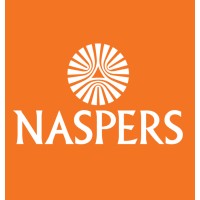
Naspers Limited
Established in 1915, Naspers has transformed itself into a global consumer internet company and one of the largest technology investors in the world. Through Prosus, the group operates and invests globally in markets with long-term growth potential, building leading consumer internet companies that empower people and enrich communities. Prosus has its primary listing on Euronext Amsterdam and a secondary listing on the Johannesburg Stock Exchange, and Naspers is the majority owner of Prosus. In South Africa, Naspers is one of the foremost investors in the technology sector and is committed to building its internet and ecommerce companies. These include Takealot, Mr D Food, Superbalist, Autotrader, Property24 and PayU, and Media24, South Africa’s leading print and digital media business. Naspers has a primary listing on the Johannesburg Stock Exchange (NPN.SJ), a secondary listing on the A2X Exchange (NPN.AJ) in South Africa, and has a level 1 American Depository Receipt (ADR) programme which trades on an over-the-counter basis in the United States of America. For more information, please visit www.naspers.com.






